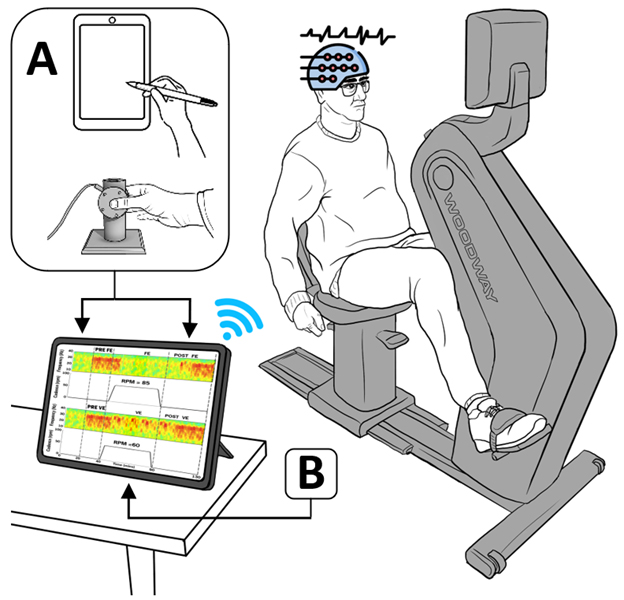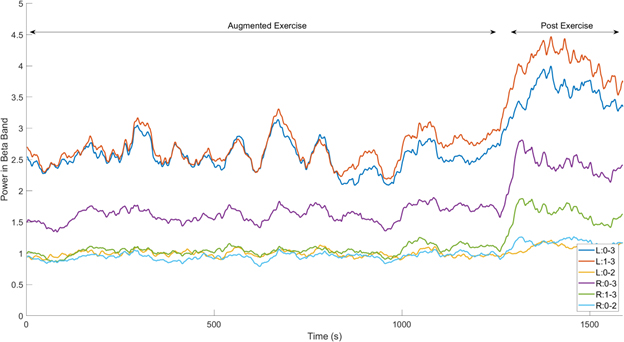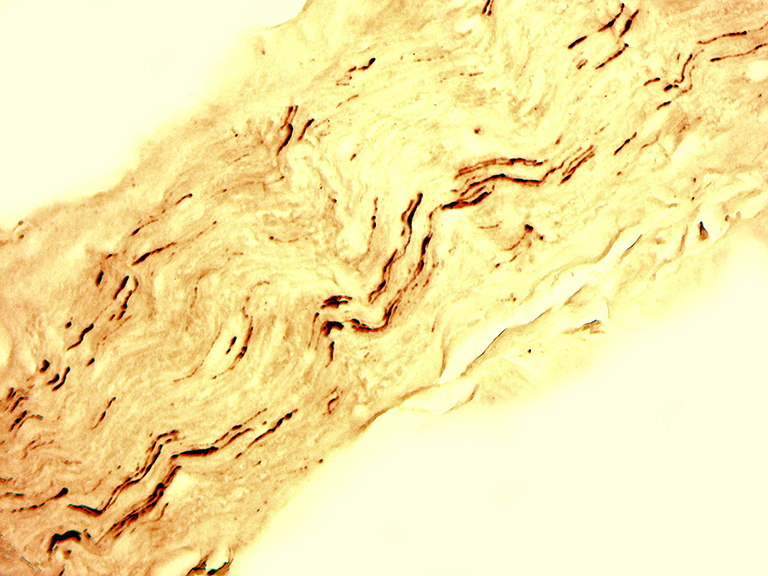Parkinson's
The PRP Presents the Fiscal Year 2022 Investigator-Initiated Research Award Recipients



Posted December 29, 2023
Identifying the Neural Signature of Exercise to Advance Treatment of PD Cognitive Declines
 Dr. Jay Alberts
Dr. Jay Alberts (Photo Provided)
Jay Alberts, Ph.D., Cleveland Clinic Foundation
Previous research has shown that aerobic exercise, specifically exercise performed on a stationary bicycle in which a motor augments or increases the rate of pedaling effectively alleviates the motor and certain cognitive symptoms of Parkinson's disease. With support from a fiscal year 2022 Investigator-Initiated Research Award, Jay Alberts, Ph.D., is studying the effects of aerobic exercise on the motor and non-motor symptoms of Parkinson's disease when used in conjunction with deep brain stimulation therapy. Study participants will take part in exercises with and without the augmented pedaling while recording neural activity from the subthalamic nucleus via the deep brain stimulation electrodes. The research team will then assess participants' motor (e.g., grip force production and modulation) and non-motor functions (e.g., information processing and processing speed) prior to and following exercise. Dr. Alberts and team, using the pre-exercise data will understand the neural signature underlying Parkinson's disease motor and non-motor dysfunction and utilize data after exercise to identify the potential mechanism(s) responsible for exercise related improvements in motor and cognitive performance. In sum, the results of this project will advance understanding of Parkinson's disease and provide guidance in the eventual development of deep brain stimulation settings that could replicate or augment the effects of exercise.
 Figure 1: Experimental set-up in which Parkinson's disease patients will complete 40 minutes of exercise on a stationary cycle and perform cognitive and motor tasks (inset A) while neural activity is being gathered from cortical electroencephalogram (EEG) and local field potentials (LFPs) from the subthalamic nucleus of the basal ganglia (shown in plot B).
Figure 1: Experimental set-up in which Parkinson's disease patients will complete 40 minutes of exercise on a stationary cycle and perform cognitive and motor tasks (inset A) while neural activity is being gathered from cortical electroencephalogram (EEG) and local field potentials (LFPs) from the subthalamic nucleus of the basal ganglia (shown in plot B).  Figure 2: Bilateral local field potential data from an individual with Parkinson's disease performing Augmented Exercise and immediately post-exercise. Exercise appears to suppress excess Beta activity and this suppression may be related to improvements in motor function associated with exercise.
Figure 2: Bilateral local field potential data from an individual with Parkinson's disease performing Augmented Exercise and immediately post-exercise. Exercise appears to suppress excess Beta activity and this suppression may be related to improvements in motor function associated with exercise. Targeting a Novel Adaptive Stress Response Pathway for Therapeutic Intervention in Alpha-Synuclein-Induced Dementia
Bobby Thomas, Ph.D., Medical University of South Carolina
 Dr. Bobby Thomas
Dr. Bobby Thomas (Photo Provided)
Parkinson's disease is characterized by a progressive loss of nerve cells in the brain that produce dopamine, a chemical that controls many bodily functions, including movement.1 Another neuropathological hallmark of the disease is clusters of α-Syn in the brain known as Lewy bodies. There is growing evidence that suggests that abnormalities in α-Syn are a strong pathological correlate for movement and cognitive dysfunction in Parkinson's disease.1,2 One promising therapeutic approach for Parkinson's disease is to target the protein NRF2, which activates proteostasis that assists in α-Syn clearance and antagonizes etiological pathways in PD, such as oxidative stress, inflammation, and impairment of cellular repair pathways.3 Current treatment protocols targeting NRF2 activation have been ineffective because they elicit significant side effects and result in the expression of another protein, Bach1, which represses NRF2, rendering NRF2 activation a less powerful treatment option.3,4 Therefore, better insight into the mechanisms underpinning α-Syn clearance and inhibiting etiological pathways involved in Parkinson's disease is critical for developing therapeutic approaches. With help from an Investigator-Initiated Research Award, Bobby Thomas, Ph.D., aims to build on his preliminary research into the role of Bach1 in Parkinson's disease to explore how inhibiting Bach1 affects NRF2 activation and pathophysiological processes underlying α-Syn pathology in Parkinson's. A better understanding of this dynamic could lead to new and improved treatment options for patients with Parkinson's disease who are experiencing a progressive decline of movement and cognitive functions from nerve cell deterioration and loss.
References:
1Thomas B, Beal MF. Parkinson's disease. Hum Mol Genet. 2007;16 Spec No. 2:R183-94. PMID: 17911161.
2Hurtig HI, Trojanowski JQ, Galvin J, Ewbank D, Schmidt ML, Lee VM, Clark CM, Glosser G, Stern MB, Gollomp SM, Arnold SE. Alpha-synuclein cortical Lewy bodies correlate with dementia in Parkinson's disease. Neurology. 2000;54(10):1916-21. PMID: 10822429.
3Hushpulian D.M., Ammal Kaidery N., Ahuja M., Poloznikov A. A., Sharma S.M., Gazaryan I.G., Thomas B. Challenges and Limitations of Targeting the Keap1-Nrf2 pathway for Neurotherapeutics: Bach1 Derepression to the Rescue. Front. Aging Neurosci. 2021; 13: 673205. PMID: 33897412.
4Ahuja M., Kaidery N., Dutta D., Attucks O.C., Kazakov E.H., Gazaryan I.G., Matsumoto M., Igarashi K., Sharma S.M., Thomas B. Harnessing the Therapeutic Potential of the Nrf2/Bach1 Signaling Pathway in Parkinson's disease. Antioxidants 2022; 11(9): 1780. PMID: 36139853.
Cognitive Functions Impairment as a Novel Paradigm for Delineating Cognitive Dysfunction in Parkinson's Disease (PD-CFI)
Deepak Gupta, M.D., M.S., University of Vermont & State Agricultural College
 Dr. Deepak Gupta
Dr. Deepak Gupta (Photo Provided)
The current classification model for diagnosing cognitive dysfunction in Parkinson's disease only includes mild cognitive impairment and dementia, which do not capture the full range of impairment severity. The binary nature of the current classification model does not capture all aspects of the disease present in early stages or among smaller subgroups of patients. Narrowly focused classification data limit research capacity to analyze outcome measures and identify potential biomarkers associated with various characteristics of Parkinson's disease. With support from a fiscal year 2022 Investigator-Initiated Research Award, Dr. Gupta and his collaborators plan to develop a new model for diagnostic classification of cognitive impairment in Parkinson's disease. Specifically, the project team will apply a novel statistical modelling technique, called partial ordered set (POSET), for developing the PD-CFI classification scheme using the Pacific Udall Center data developed specifically for studying cognitive dysfunction in Parkinson's disease. They will then compare it against currently used approaches as well as validate it using an artificial intelligence method in a multi-center clinical research study.
Mechanisms of Impaired Swallowing, Speech, and Voice in Parkinson's Disease
 Dr. Liancai Mu
Dr. Liancai Mu (Photo Provided)
Liancai Mu, M.D., Ph.D., Hackensack University Medical Center
Among patients with Parkinson's disease, 90% experience issues with speech, swallowing, and voice at some point in disease progression. In previous research, Liancai Mu, M.D., Ph.D., found that the pharyngeal nerves in people with Parkinson's disease who experienced difficulty swallowing, or dysphagia, exhibited more lesions composed of the protein alpha-synuclein, or α-Syn, than patients without dysphagia
 Figure 3: Image of a longitudinal section of pharyngeal motor branch of the X nerve from a Parkinson's disease subject with dysphagia. The section was immunostained for phosphorylated α-synuclein (α-Syn). Note that there are numerous lesions composed of α-Syn (darkly stained threads and dots) in the nerve. 200x.
Figure 3: Image of a longitudinal section of pharyngeal motor branch of the X nerve from a Parkinson's disease subject with dysphagia. The section was immunostained for phosphorylated α-synuclein (α-Syn). Note that there are numerous lesions composed of α-Syn (darkly stained threads and dots) in the nerve. 200x. Last updated Wednesday, March 12, 2025














